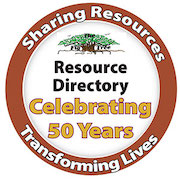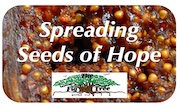Editorial Reflections
Old arguments raised to undermine rights won to stabilize middle class
Human beings have always organized into groups—families, clans, towns, guilds, armies, teams, unions, choirs, fraternities, trade associations and more. Generally the groups are not controversial, but labor and trade unions are perennial hot-button issues.
The history of unions in the U.S. has been tumultuous, and echoes of the early days are heard today. The growth of unions in the 19th century was in part a reaction to the period’s rampant capitalism. The U.S. was expanding geographically, industrially and economically with few restraints. Much money was made. Robber barons amassed obscene fortunes by exploiting labor and by dubious financial dealings on Wall Street.
They rationalized practices with ideas of social Darwinism, which swept England and the United States. Its oversimplified version became a fad. It taught survival of the fittest and the inferiority of the poor, and called for extremely conservative government policies supporting imperialism, colonialism and racism.
Today some politicians and businessmen are enamored of the equally self-centered philosophy of Russian-American writer Ayn Rand. Same tune. Different orchestration.
Even in boom periods, wages were low, housing squalid and crowded, and working conditions abominable. Twelve-hour work shifts were common. In some Pittsburgh steel mills, men worked days one week and nights the next week. They shifted by working 24 hours. There were no safety rules. Children often worked in the same mills for the same hours as their parents.
A persistent argument against unions has been that strikers use violence against those who don’t want to strike. The violence in 1892 at the strike against the Carnegie Steel Company mill in Homestead, Pa., shows the pattern. A three-year contract with the Amalgamated Association of Iron and Steel Workers included some work and safety rules. When it expired, the union asked for a raise because production and profits were up. Plant manager Henry Clay Frick “offered” pay cuts and longer hours, and withdrew recognition of the union.
In a strike, union and non-union workers walked out. The sheriff was unable to raise a posse to protect strikebreakers because the town sympathized with the union. He hired 300 guards from Pinkerton Detective Agency, armed with rifles and machine guns. There were fatalities on both sides, and the sheriff asked the governor to send in militia. He sent 8,000.
Those images are often invoked to blot out recognition of how labor unions help there be a middle class so workers earn a fair share of the wealth they create. Accomplishments include eight-hour workdays, five-day work weeks, paid vacations, retirement and health care benefits, safety regulations, bans on sweatshops and child labor, and protection against discrimination in employment. These are taken for granted, but shouldn’t be because they are now under attack from business and political foes again.
Consider safety. On-the-job injuries and fatalities have increased as the Occupational Safety And Health Administration (OSHA) is undermined. Workers must buy their own safety gear. It’s expensive. Mine owners are not complying with safety regulations, leading to explosions and cave-ins.
Consider the workday. To avoid paying time-and-a-half for overtime, some businesses reclassify employees as managers. Managers aren’t paid overtime.
Unions were strongest just after World War II, an era of growth. We did not have the gaping inequality problem of today.
Much pressure to weaken regulations comes from trade associations, which are organizations of businesses.
There are 7,600 trade associations. Most inform the public and members about news. However, 2,000 of them have their headquarters in Washington, DC.
The myth that most unions are corrupt lingers, based on the same two examples: the Teamsters and United Mine Workers. Labor reporter Philip Dine covers them in his book State of the Unions, pointing out that “most unions have sterling records of clean governance without corruption, including manufacturing unions, and public employees’ and teachers’ unions,” and yet they are the ones most under attack today.
Nancy Minard - contributing editor
Copyright © February 2015 - The Fig Tree






